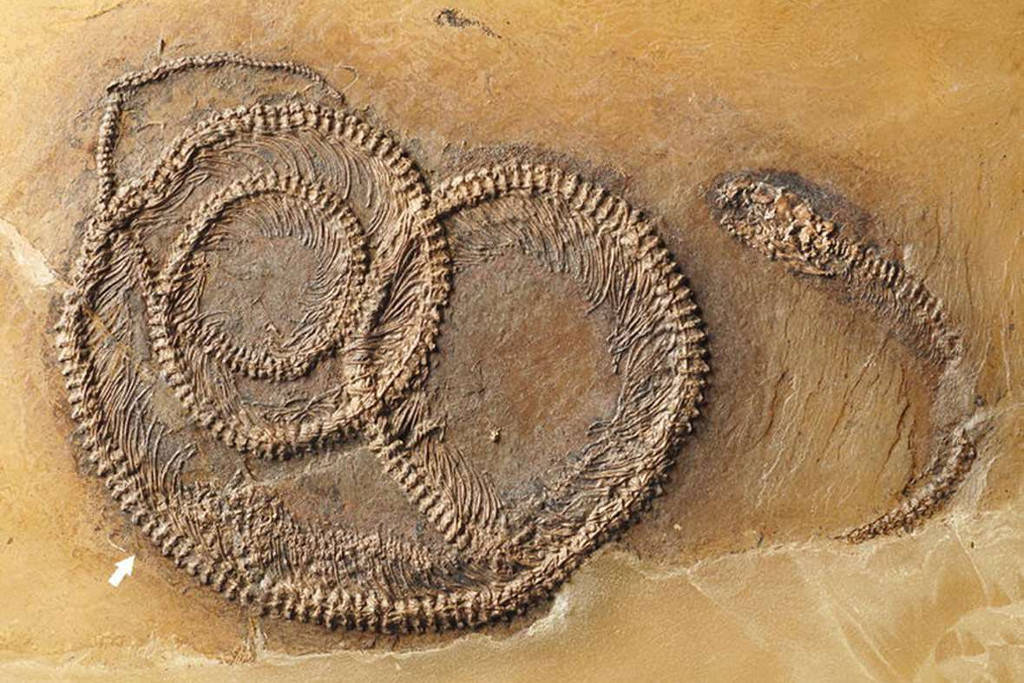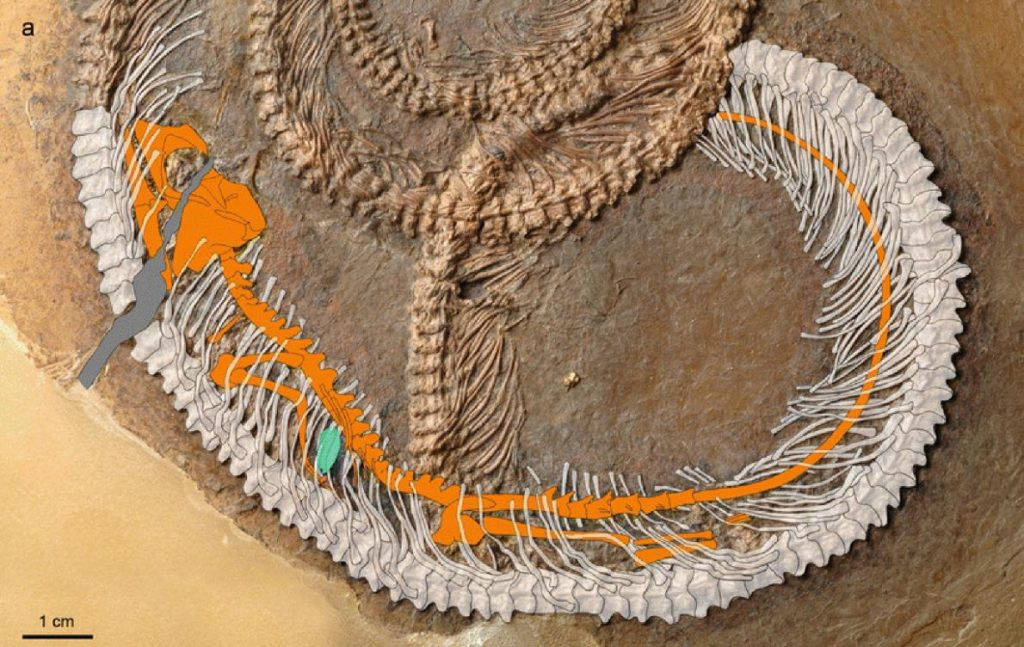The second time the ancient fossil '3 in 1' was discovered
New biologist archaeologists unearthed one of the very rare ancient fossil samples near a volcano in Germany. According to the study of fossils dating back 48 million years.
The fossil kept intact the history of a prehistoric war: a small insect inside the lizard, and the lizard was in the belly of a snake.

The preserved fossil sample is almost intact.
Discovered in the south-west of the abandoned Messel Pit quarry, this extremely special and rare fossil is one of two fossils that store up to three prehistoric animals in one artifact.
" This may be the last fossil that I could find throughout my life and probably won't have a chance to see it again, it's really rare . " Biological archaeologist Krister Smith from Senckenberg Institute (Germany) said.
His team believes that the ancient lizard had eaten this small insect two days before being swallowed by the snake. The cause of the snake's death is thought to be due to the volcanic gas of the volcano.
This is an important archaeological evidence, helping researchers better understand the complex food chain of ancient times .

The position of the lizard and small insects inside the belly is solid.
In 2008, another 250 million-year-old "3 in 1" fossil was discovered by an Australian researcher: a shark eating an amphibian, in the belly of this amphibian is a fish. other small .
This is an important archaeological evidence, helping researchers better understand the complex food chain of ancient times.
The study is published on Palaeobiodiversity and Palaeoenvironments.
You should read it
- Finding new fossils can represent the world's oldest fungus
- The mystery of the 290-million-year-old giants challenges scientists around the world
- Giant bat fossils have been discovered
- Discovered an old 14,000 year old campsite in Argentina
- India first discovered fossils of fish lizards
- Ancient ancient embankment found in Aswan, Egypt